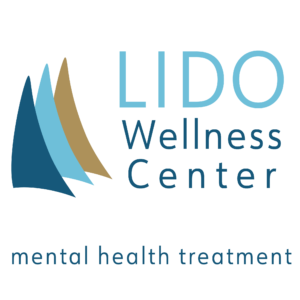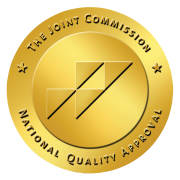Body Dysmorphia Symptoms
In a culture obsessed with mirror reflections and selfie perfection, there lurks a misunderstood and often hidden issue: Body Dysmorphic Disorder (BDD). It’s not just about being skinny or fat; it’s a complex mental health condition that distorts a person’s perception of their body, leading to significant distress. And there are various body dysmorphia symptoms that come along with it.
Understanding BDD
Body Dysmorphic Disorder is like living in a carnival mirror room, where the reflections are twisted and exaggerated. Individuals with BDD are preoccupied with perceived flaws in their appearance, often nonexistent or minor to others. It’s a relentless pursuit of an unattainable physical ideal, a mirage that keeps moving farther away the closer one gets. What are the common body dysmorphia symptoms?
Body Dysmorphia Symptoms
- Obsessive Focus on Perceived Flaws: Individuals may fixate on specific body parts – the nose, skin, hair, or overall body shape. It’s an endless loop of scrutiny and dissatisfaction.
- Compulsive Behaviors: Mirror checking, excessive grooming, skin picking, or seeking reassurance, these rituals are attempts to alleviate the distress but often reinforce the anxiety.
- Avoidance: Avoiding social situations, photographs, or mirrors due to intense self-consciousness.
- Emotional Turmoil: Feelings of shame, guilt, and intense distress about one’s appearance can lead to depression, anxiety, and even suicidal thoughts.
The Skinny-Fat Dichotomy Myth
BDD is not just a disorder of wanting to be skinnier or rejecting fatness. It’s a complex condition where the focus can be on any body part or perceived flaw, regardless of a person’s actual weight or shape. It’s a distorted self-image where the mind’s eye sees a vastly different picture than what’s in the mirror.
The dangers of BDD are profound. It can lead to social isolation, difficulties in relationships, and problems at work or school. The risk of developing eating disorders, substance abuse, and self-harm behaviors is significantly higher. The biggest danger, however, is the risk of suicide. The pain of living in a body perceived as deeply flawed can drive individuals to desperation.
Body Dysmorphic Disorder (BDD) Self-Assessment Test
Disclaimer: This test is not a diagnostic tool. It is designed to help you identify if you might have symptoms consistent with Body Dysmorphic Disorder. Only a qualified healthcare professional can provide an accurate diagnosis.
Please answer the following questions honestly:
- Preoccupation with Appearance
- Do you find yourself excessively worried about a specific aspect of your appearance that others say is minor or non-existent?
- Repetitive Behaviors
- Do you engage in behaviors like mirror checking, excessive grooming, or skin picking, related to your appearance concerns?
- Impact on Daily Life
- Have your concerns about your appearance significantly impacted your social life, work, or daily activities?
- Emotional Distress
- Do your concerns about your appearance cause you significant distress, anxiety, or depression?
- Avoidance
- Do you tend to avoid social situations, photographs, or mirrors due to discomfort with your appearance?
- Time Consumption
- Do you spend an hour or more every day thinking about your appearance flaw?
- Seeking Reassurance
- Do you frequently seek reassurance about your appearance from others, but never feel satisfied with the responses?
- Past Interventions
- Have you sought cosmetic procedures or constantly tried different treatments for your appearance concern with little satisfaction?
Scoring:
- If you answered “Yes” to multiple questions, especially those related to preoccupation, distress, and impact on daily life, it may indicate body dysmorphia symptoms are present.
Intensive Outpatient Programs (IOP): A Stepping Stone to Healing
Acknowledging the problem is the first step. Treatment for BDD often involves a combination of psychotherapy and medication. Cognitive Behavioral Therapy (CBT) is particularly effective, helping to change negative thought patterns and behaviors.
For those needing more support than traditional therapy but not requiring inpatient care, IOPs are an ideal middle ground. These programs offer structured therapy while allowing individuals to live at home and maintain daily responsibilities.
- Group Therapy: IOPs often include group therapy, a space to share experiences and learn from others facing similar challenges.
- Individual Therapy: Tailored one-on-one sessions focus on specific issues, coping strategies, and personalized recovery goals.
- Family Therapy: Involving family members can provide a support system and help them understand the complexity of BDD.
- Holistic Approaches: Activities like yoga, meditation, and art therapy can enhance self-awareness and promote relaxation.
Recovery from BDD is a journey back to oneself. It’s about relearning to see beauty in the real, imperfect, and human. It’s about understanding that self-worth is not a reflection in a mirror but the light you bring to the world.
Get Help for Body Dysmorphia Symptoms in Newport Beach
If you recognize yourself in these words, remember, you are not alone in this battle. At our Newport Beach Mental Wellness Program, we understand the depth and complexity of Body Dysmorphic Disorder. Our compassionate and experienced team is here to guide you on a journey of healing and self-discovery.
Lido Wellness Center offers a balanced approach combining therapy, group support, and holistic practices, all tailored to your unique needs. Take the first brave step towards reclaiming your life and recognizing the beauty in your real, imperfect, and human self. Contact us today – your story isn’t over yet.




